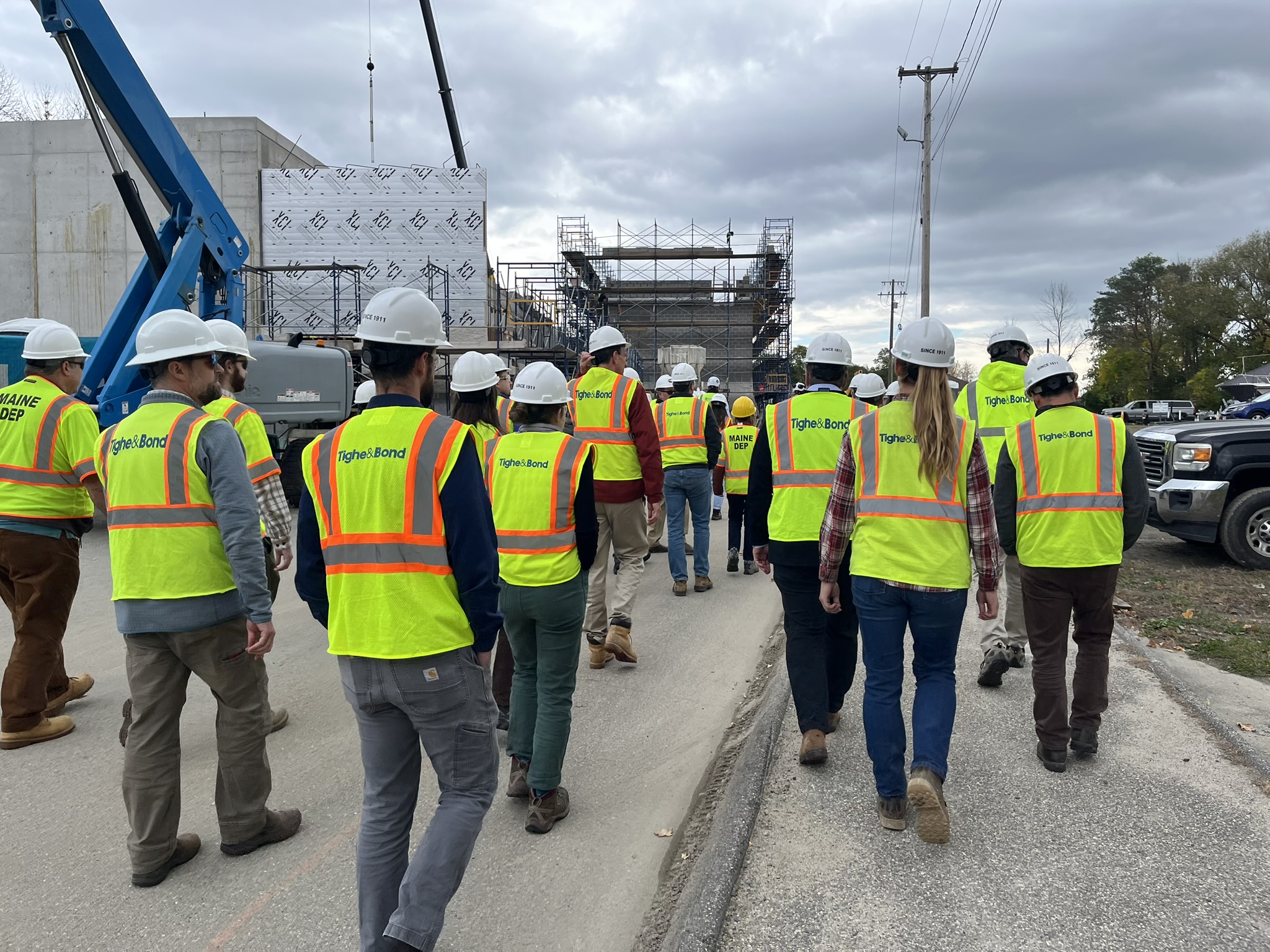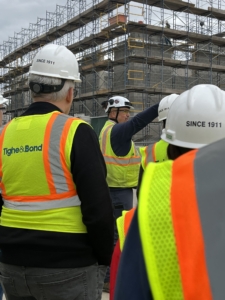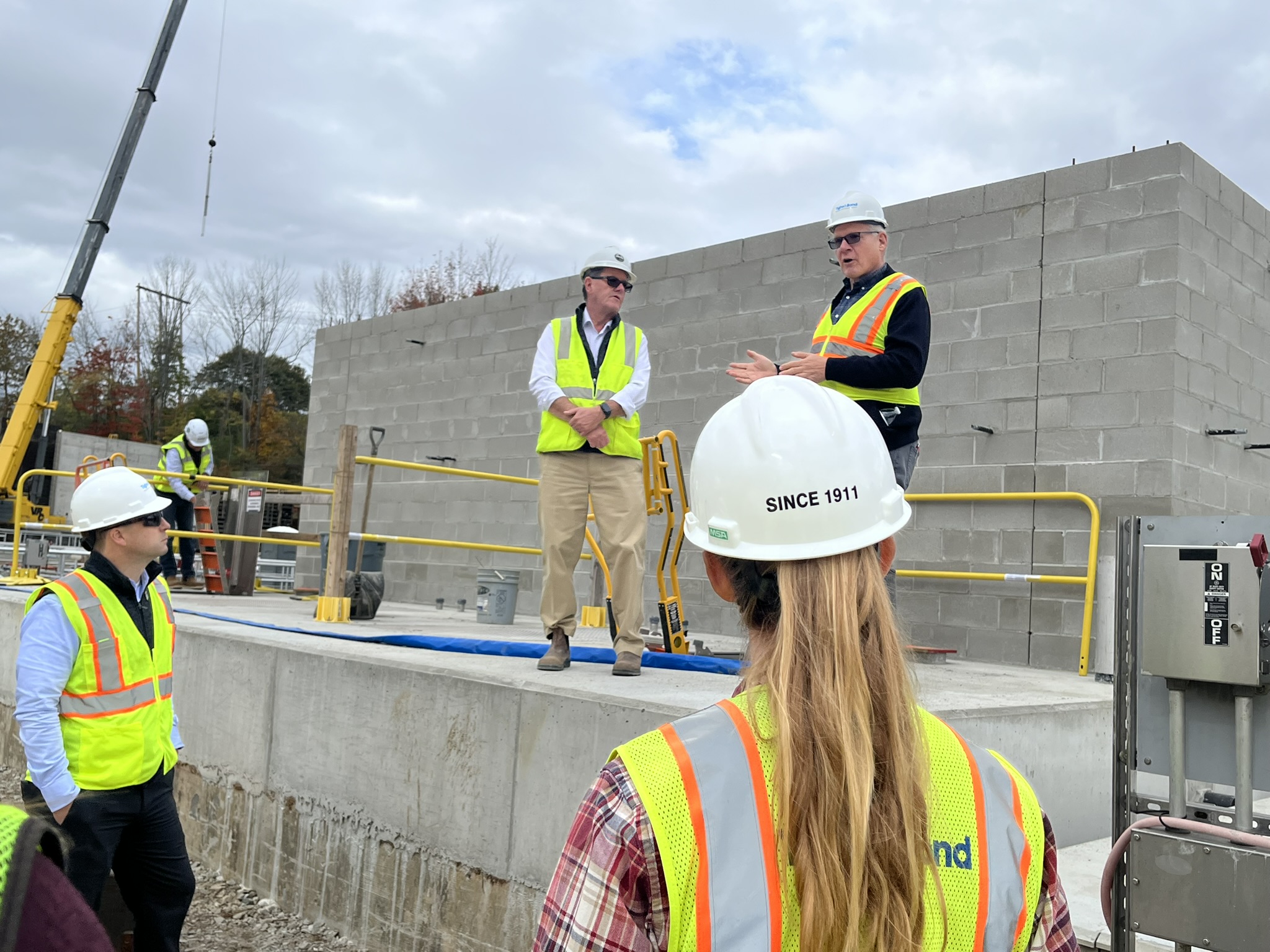Saco WRRF Field Visit: An Inside Look at Innovative Wastewater Design

Our team organizes field visits on key projects throughout the year, allowing staff beyond the project team to learn more about our diverse service offerings to hone their technical expertise. Led by Vice President Dan Bisson, our Water Business Line recently hosted a field trip at the City of Saco, Maine’s Water Resource Recovery Facility.
This event brought together our staff, City officials, state and federal regulators, and construction partners, offering a first-hand look at one of Maine’s most significant infrastructure upgrades – a project that is transforming the way Saco manages and protects its water resources.
Planning, Engagement, and Funding
We began the day with a discussion on how this project came to life through thoughtful planning, community and stakeholder engagement, and funding partnerships. Representatives from the City of Saco, Maine DEP, and EPA joined us to share their perspectives on the collaborative process that shaped the project’s goals. Together, we talked about how early communication and stakeholder input were essential to gaining community support and aligning priorities. This project utilized the EPA’s Augmented Alternatives Analysis (AAA) planning process for community engagement.
We also highlighted the project’s funding framework — a $62 million investment supported by the Clean Water State Revolving Fund (CWSRF) and EPA Congressionally Directed Spending (CDS) grants. These funding sources made it possible to move forward with major resiliency upgrades while keeping long-term affordability in mind for the community.

Vice President Dan Bisson leads Tighe & Bond staff in a tour of the Saco WRRF.
Addressing Technical and Environmental Challenges
The next session focused on the technical challenges and design innovations behind the WRRF upgrade. We walked participants through the improvements now under construction, including raising key treatment facilities above the FEMA 100-year flood elevation and relocating electrical systems to reduce vulnerability to flooding and sea level rise.
We also shared details of the new Aerobic Granular Sludge (AGS) treatment process, an advanced biological treatment technology that provides efficient nutrient removal and high-quality effluent, while managing the space constraints of the WRRF site, which abuts the Saco River. Alongside the AGS system, we’re implementing new headworks screening, grit removal, ultraviolet disinfection and effluent filtration systems, all designed to enhance reliability, energy efficiency, and long-term performance.
The CMAR Approach
The final session centered on the Construction Manager at Risk (CMAR) delivery approach, which has been key to maintaining collaboration and flexibility throughout the project.
Working closely with the City of Saco and MWH Constructors, we’ve been able to navigate challenges in real time — from sequencing complex upgrades to managing flood-proofing and equipment installation all while maintaining plant operations on the congested project site. The CMAR model has allowed us to combine our design insight with construction expertise, helping the team deliver value and reduce risk during every phase of the project.
Looking Ahead
Hosting this field trip gave our partners and colleagues a chance to see how planning, engineering, and construction come together to create meaningful change — not just for a facility, but for an entire community. With the Saco WRRF currently under construction, this field trip allowed the project team, officials, regulators, and the community at large to better understand an important project which will improve wastewater treatment capacity and resiliency for the City of Saco.

Tags: field trip, Saco, Wastewater, wastewater engineering


